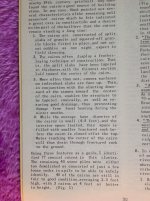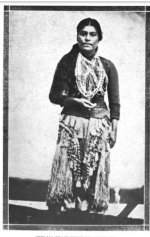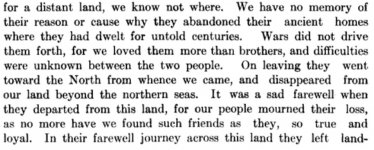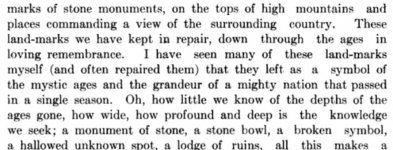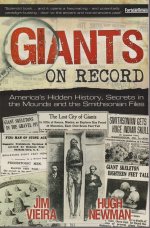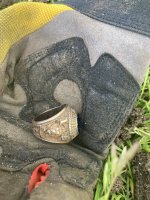Charl
Silver Member
I'm dedicating this thread to Fred250, because I know from many previous comments that the subject matter interests him. (So Fred, even though for some bizarre reason you seem to believe I'm promoting "the peopling of the Americas" conspiracy theories, this thread's for you, lol...)
This may be of interest to folks living in Eastern seaboard States. It involves a debate, currently raging, regarding the origin of certain stone structures, especially prevelant in the Northeast. These structures include carefully constructed conical stone cairns, larger cairns known as platform cairns, short stone walls not constructed as enclosures, but resembling effigies like snakes, stone chambers built into the sides of hills, and balanced or perched boulders, sometimes resembling the stone dolmens of megalithic cultures in the Old World.
For much of its existence, this debate pitted two broad ideas: these stone mnuments(minus the perched boulders, many of which are Post glacial formations formed naturally) are the result of colonial settler activity, the stone mounds resulting from clearing fields, for instance vs. these monuments were the product of a megalithic culture from across the pond. This latter theory was carried almost exclusively by amateurs, such as organizations like the New England Antiquities Research Association(Neara). During the 70's and 80's, I served as the research director of the RI chapter of Neara. My team produced the first plane table survey, anywhere in the Northeast, of a large field of well made conical cairns at a site in western RI. If I ever bought into the "megalithic builders from Europe" theory, it was for a very short time.
A huge shift in the debate occurred with the publication of this book, which claimed the stone structures were the product of prehistoric Native American activity, which was then pitted against the colonial and post colonial settler theory:
https://www.amazon.com/Manitou-Sacred-Landscape-Englands-Civilization/dp/0892810785
This Neara page provides a sampling of articles written in support of the Native American origin for many of these stone structures:
https://www.neara.org/articles.pdf
Other portions of the East entered the fray, such as these stone mounds in Alabama:
https://www.newswire.com/news/thous...ounds-recently-discovered-in-alabama-19593273
AP Magazine
An interesting hillside cairn site in Pennsylvania:
The mysterious stone cairns of Susquehanna County - Adverbly: Fine Browsing, Hand Delivered to Your Internet Viewing Screen
Some professional historians working in New England made efforts to distinguish Native from settler stone structures:
Stone Structures of Northeastern United States
One stone chamber in Massachusetts, the Upton chamber, yielded dates suggesting a pre-colonial origin:
https://www.uptonma.gov/sites/uptonma/files/uploads/upton_stone_chamber_-_preliminary_findings.pdf
Most recently, there have been two major developments. 24 tribes(now 25), ranging from Maine to Texas, banded together and passed resolutions in which they claimed their oral traditions tied their people to these very stone structures being debated. You can see all the resolutions they passed at this page:
http://www.larryharrop.com/uset/
The Narragansett of RI were leaders in this effort, and one result of that effort to claim and identify what they termed "sacred ceremonial landscapes" was the protection of a site in Turner's Falls, Ma., on the Ct. River:
https://www.nps.gov/nr/publications/guidance/TurnerFallsDOEDecision-Redacted.pdf
Even though most area archaeologists supported the settler field clearing theory, one local historical society sided with the Narragansett and helped them preserve and dedicate one such sacred landscape. Of particular interest at this link is the YouTube video of the talk delivered at the dedication by Narragansett historical preservation officer D. Harris. Mr. Harris was the driving force behind the preservation of the Turner's Falls scared landscape site:
Manitou Hassannash Preserve ? Hopkinton Historical Association
Apart from the development of Native American cultural claims to these sites, the second recent major development has been the backing of the Native American cultural claims by some regional professional archaeologists. One such individual is Dr. Curtiss Hoffman, who is the editor of the journal of the Massachusetts Archaeological Society, and the publication of his book "Stone Prayers". Below I have reproduced the front and back cover, the back cover describing the 4 theories Hoffman examined. A link to Hoffman's new book:
https://www.amazon.com/Stone-Prayers-American-Constructions-Seaboard/dp/1634990498
Here's the front and back covers of Hoffman's groundbreaking study. I've just started reading, so can't review it just yet. The back cover lists the 4 model he examined....
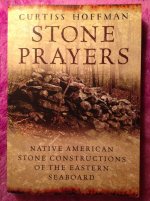
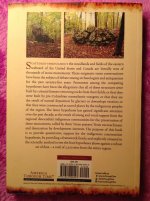
As noted, back in the late 70's, my Neara team produced the first plane table survey of a conical cairn field in the Northeast. We found no pattern, such as astronomical alignments. Here we see the late geomorpholgist Dr. John Fisher, and his wife. Dr. Fisher had the needed experience with a plane table. If this is field clearing, it's not the usual "just toss the rocks in a pile". These are all well made conical stone cairns.
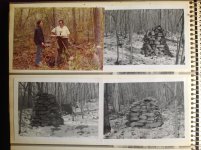
Nearby, here are two so-called platform mounds. Notice the two trianguloid or tombstone shaped stones propped against the mounds. These are known as "Manitou Stones", and have been found at dozens of platform cairn sites in the Northeast. If this were farmer field clearing activity, why would a farmer be erecting such stones?
First two photos show one platform cairn. I'm standing there for scale:
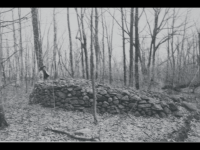
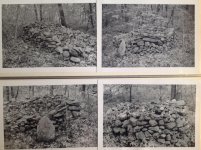
Here is a very large platform cairn. I'm standing for scale in the b/w photo. Note the Manitou stone, which is pointing due North in this example:
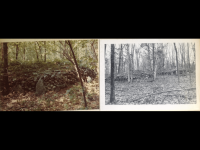
Anyway, just thought folks on the East coast might like to know this debate on the origin of these stone mounds and other stone constructs has entered a new stage.....
There has long been a bias on the part of American archaeologists that Native Americans in the Northeast did not build in stone. While sites like Queen's Fort, in Exeter, RI, and the Archaic period Flagg rock shelter in Ma., disprove that bias, this current debate is somewhat acrimonious, and it's ultimate resolution is unknown...
This may be of interest to folks living in Eastern seaboard States. It involves a debate, currently raging, regarding the origin of certain stone structures, especially prevelant in the Northeast. These structures include carefully constructed conical stone cairns, larger cairns known as platform cairns, short stone walls not constructed as enclosures, but resembling effigies like snakes, stone chambers built into the sides of hills, and balanced or perched boulders, sometimes resembling the stone dolmens of megalithic cultures in the Old World.
For much of its existence, this debate pitted two broad ideas: these stone mnuments(minus the perched boulders, many of which are Post glacial formations formed naturally) are the result of colonial settler activity, the stone mounds resulting from clearing fields, for instance vs. these monuments were the product of a megalithic culture from across the pond. This latter theory was carried almost exclusively by amateurs, such as organizations like the New England Antiquities Research Association(Neara). During the 70's and 80's, I served as the research director of the RI chapter of Neara. My team produced the first plane table survey, anywhere in the Northeast, of a large field of well made conical cairns at a site in western RI. If I ever bought into the "megalithic builders from Europe" theory, it was for a very short time.
A huge shift in the debate occurred with the publication of this book, which claimed the stone structures were the product of prehistoric Native American activity, which was then pitted against the colonial and post colonial settler theory:
https://www.amazon.com/Manitou-Sacred-Landscape-Englands-Civilization/dp/0892810785
This Neara page provides a sampling of articles written in support of the Native American origin for many of these stone structures:
https://www.neara.org/articles.pdf
Other portions of the East entered the fray, such as these stone mounds in Alabama:
https://www.newswire.com/news/thous...ounds-recently-discovered-in-alabama-19593273
AP Magazine
An interesting hillside cairn site in Pennsylvania:
The mysterious stone cairns of Susquehanna County - Adverbly: Fine Browsing, Hand Delivered to Your Internet Viewing Screen
Some professional historians working in New England made efforts to distinguish Native from settler stone structures:
Stone Structures of Northeastern United States
One stone chamber in Massachusetts, the Upton chamber, yielded dates suggesting a pre-colonial origin:
https://www.uptonma.gov/sites/uptonma/files/uploads/upton_stone_chamber_-_preliminary_findings.pdf
Most recently, there have been two major developments. 24 tribes(now 25), ranging from Maine to Texas, banded together and passed resolutions in which they claimed their oral traditions tied their people to these very stone structures being debated. You can see all the resolutions they passed at this page:
http://www.larryharrop.com/uset/
The Narragansett of RI were leaders in this effort, and one result of that effort to claim and identify what they termed "sacred ceremonial landscapes" was the protection of a site in Turner's Falls, Ma., on the Ct. River:
https://www.nps.gov/nr/publications/guidance/TurnerFallsDOEDecision-Redacted.pdf
Even though most area archaeologists supported the settler field clearing theory, one local historical society sided with the Narragansett and helped them preserve and dedicate one such sacred landscape. Of particular interest at this link is the YouTube video of the talk delivered at the dedication by Narragansett historical preservation officer D. Harris. Mr. Harris was the driving force behind the preservation of the Turner's Falls scared landscape site:
Manitou Hassannash Preserve ? Hopkinton Historical Association
Apart from the development of Native American cultural claims to these sites, the second recent major development has been the backing of the Native American cultural claims by some regional professional archaeologists. One such individual is Dr. Curtiss Hoffman, who is the editor of the journal of the Massachusetts Archaeological Society, and the publication of his book "Stone Prayers". Below I have reproduced the front and back cover, the back cover describing the 4 theories Hoffman examined. A link to Hoffman's new book:
https://www.amazon.com/Stone-Prayers-American-Constructions-Seaboard/dp/1634990498
Here's the front and back covers of Hoffman's groundbreaking study. I've just started reading, so can't review it just yet. The back cover lists the 4 model he examined....


As noted, back in the late 70's, my Neara team produced the first plane table survey of a conical cairn field in the Northeast. We found no pattern, such as astronomical alignments. Here we see the late geomorpholgist Dr. John Fisher, and his wife. Dr. Fisher had the needed experience with a plane table. If this is field clearing, it's not the usual "just toss the rocks in a pile". These are all well made conical stone cairns.

Nearby, here are two so-called platform mounds. Notice the two trianguloid or tombstone shaped stones propped against the mounds. These are known as "Manitou Stones", and have been found at dozens of platform cairn sites in the Northeast. If this were farmer field clearing activity, why would a farmer be erecting such stones?
First two photos show one platform cairn. I'm standing there for scale:


Here is a very large platform cairn. I'm standing for scale in the b/w photo. Note the Manitou stone, which is pointing due North in this example:

Anyway, just thought folks on the East coast might like to know this debate on the origin of these stone mounds and other stone constructs has entered a new stage.....
There has long been a bias on the part of American archaeologists that Native Americans in the Northeast did not build in stone. While sites like Queen's Fort, in Exeter, RI, and the Archaic period Flagg rock shelter in Ma., disprove that bias, this current debate is somewhat acrimonious, and it's ultimate resolution is unknown...
Amazon Forum Fav 👍
Last edited:
Upvote
0


